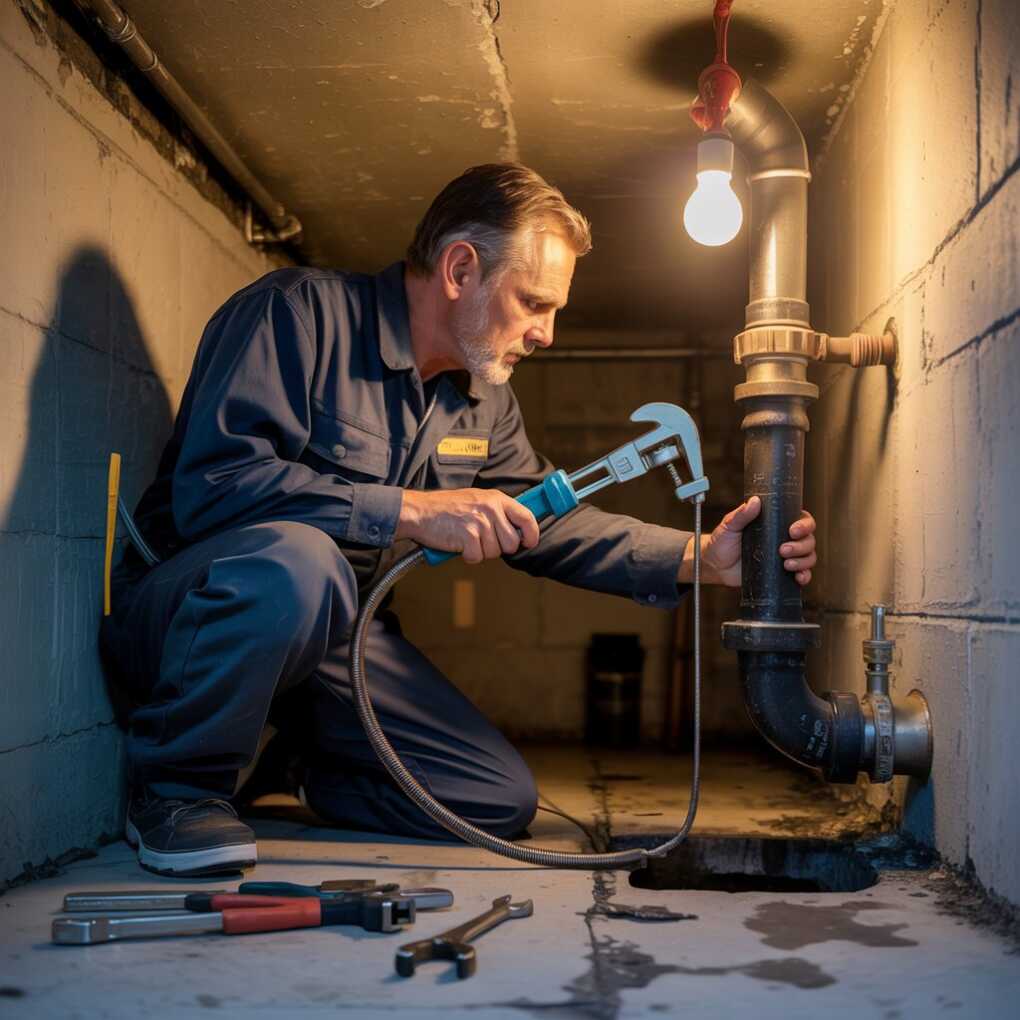When a home’s plumbing suddenly stops functioning as expected—drains backing up, toilets refusing to flush, or sewage odors creeping indoors—it’s often a sign of a clogged main sewer line. This isn’t just an annoying issue; it can lead to serious property damage and unsanitary living conditions if left untreated. The main sewer line acts as the central highway for all waste leaving a property, so when it’s blocked, the whole system is in trouble. Addressing this problem is not as simple as pouring in some drain cleaner. We will explore the practical, methodical ways plumbers approach and resolve clogged main sewer lines, using tools, training, and step-by-step strategies that aim to restore normal flow without damaging your property.

How Plumbers Address Clogged Main Sewer Lines
Initial Assessment and Symptom Check
When called to investigate a potential blockage in a sewer line, a plumber in St George begins by gathering information. They ask the homeowner about recent issues—whether multiple drains are affected, if toilets are gurgling, or if sewage has backed up into the home. These signs are vital clues. If only one drain is acting up, it might just be a localized clog. However, when multiple fixtures are involved, it often indicates a blockage in the main line. Plumbers also look for exterior indicators, such as soggy patches in the yard or foul odors emanating from the ground near the sewer access point. Once symptoms are clear, the next step involves locating the cleanout—an access pipe that allows entry to the main sewer line. This helps confirm whether the problem is indeed in the main line or further down the municipal system. This step sets the foundation for a targeted solution and avoids unnecessary guesswork.
Camera Inspection for Accurate Diagnosis
After assessing symptoms, plumbers usually insert a sewer inspection camera into the cleanout access to get a clear, live view of what’s happening inside the pipe. This camera is attached to a long, flexible rod and sends back real-time footage as it travels down the line. It can reveal the exact cause of the blockage—whether it’s a buildup of grease, invasive tree roots, collapsed piping, or foreign objects flushed down the toilet. This visual confirmation removes uncertainty from the process. It also allows the plumber to evaluate the pipe’s overall condition, not just the obstruction. With this technology, they can measure the exact distance to the blockage and avoid excessive digging or unnecessary damage. Camera inspection not only identifies the issue but also helps the homeowner understand the problem clearly, which builds confidence in the repair process. This approach makes the entire experience more transparent and efficient from start to finish.
Mechanical Snaking and Augering
Once the blockage has been identified, the plumber may choose to use a motorized drain snake, also known as an auger, to break it apart. This tool is much stronger and more effective than consumer-grade versions. A professional-grade auger consists of a long metal cable with a cutting head attached at the end. It is fed into the sewer line while spinning, and as it reaches the blockage, the rotating blades chew through the obstruction. This method works well on common clogs, such as grease buildup, toilet paper masses, or minor root intrusions. It’s a controlled and relatively non-invasive technique that can clear the line without any major digging or disruption. Plumbers adjust the auger head according to the type of clog, selecting different attachments for grease, roots, or solid blockages. It’s a hands-on approach, but it allows for precision and effectiveness in many cases where high-pressure water or chemical treatments may not be ideal.
Hydro Jetting for Deep Cleaning
If the blockage is extensive or the pipe has years of sludge buildup, plumbers may use hydro jetting. This technique involves sending a high-pressure stream of water through the sewer line to blast away clogs, residue, and even tree roots. The water jet is powerful enough to thoroughly clean the inner walls of the pipe, restoring it nearly to its original condition. This method is particularly useful for commercial properties or older homes with long-neglected sewer systems. The equipment consists of a water tank, a pressure hose, and a special nozzle that shoots water in multiple directions. The plumber controls the pressure to avoid pipe damage, especially in older or fragile systems. Hydro jetting not only resolves current blockages but also helps prevent future ones by removing all residual buildup. It’s a more aggressive option, but one that provides long-term benefits and a more comprehensive cleaning solution than snaking alone.
Conclusion
Clogged main sewer lines aren’t just inconvenient—they can bring a household to a standstill and lead to costly damage if ignored. But plumbers come equipped with practical tools, diagnostic technology, and strategic procedures to tackle these issues effectively. From symptom checks and camera inspections to mechanical snaking, hydro jetting, and even full line replacement, each step is carefully considered based on the severity of the problem and the condition of the pipe. Addressing sewer line blockages requires more than brute force—it calls for a smart, measured approach that blends technical knowledge with practical execution. When handled properly, even the most stubborn clogs can be cleared, keeping your home running smoothly and your plumbing system functioning as it should.
